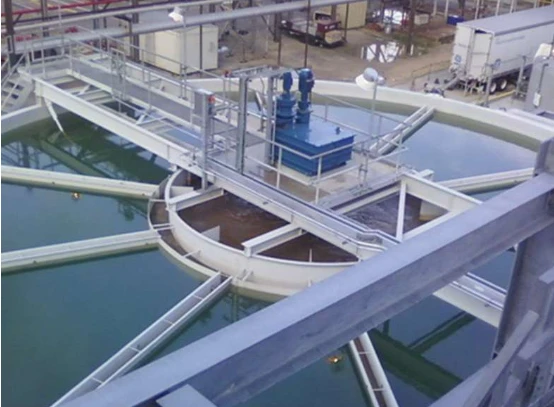
-
 Afrikaans
Afrikaans -
 Albanian
Albanian -
 Amharic
Amharic -
 Arabic
Arabic -
 Armenian
Armenian -
 Azerbaijani
Azerbaijani -
 Basque
Basque -
 Belarusian
Belarusian -
 Bengali
Bengali -
 Bosnian
Bosnian -
 Bulgarian
Bulgarian -
 Catalan
Catalan -
 Cebuano
Cebuano -
 China
China -
 China (Taiwan)
China (Taiwan) -
 Corsican
Corsican -
 Croatian
Croatian -
 Czech
Czech -
 Danish
Danish -
 Dutch
Dutch -
 English
English -
 Esperanto
Esperanto -
 Estonian
Estonian -
 Finnish
Finnish -
 French
French -
 Frisian
Frisian -
 Galician
Galician -
 Georgian
Georgian -
 German
German -
 Greek
Greek -
 Gujarati
Gujarati -
 Haitian Creole
Haitian Creole -
 hausa
hausa -
 hawaiian
hawaiian -
 Hebrew
Hebrew -
 Hindi
Hindi -
 Miao
Miao -
 Hungarian
Hungarian -
 Icelandic
Icelandic -
 igbo
igbo -
 Indonesian
Indonesian -
 irish
irish -
 Italian
Italian -
 Japanese
Japanese -
 Javanese
Javanese -
 Kannada
Kannada -
 kazakh
kazakh -
 Khmer
Khmer -
 Rwandese
Rwandese -
 Korean
Korean -
 Kurdish
Kurdish -
 Kyrgyz
Kyrgyz -
 Lao
Lao -
 Latin
Latin -
 Latvian
Latvian -
 Lithuanian
Lithuanian -
 Luxembourgish
Luxembourgish -
 Macedonian
Macedonian -
 Malgashi
Malgashi -
 Malay
Malay -
 Malayalam
Malayalam -
 Maltese
Maltese -
 Maori
Maori -
 Marathi
Marathi -
 Mongolian
Mongolian -
 Myanmar
Myanmar -
 Nepali
Nepali -
 Norwegian
Norwegian -
 Norwegian
Norwegian -
 Occitan
Occitan -
 Pashto
Pashto -
 Persian
Persian -
 Polish
Polish -
 Portuguese
Portuguese -
 Punjabi
Punjabi -
 Romanian
Romanian -
 Russian
Russian -
 Samoan
Samoan -
 Scottish Gaelic
Scottish Gaelic -
 Serbian
Serbian -
 Sesotho
Sesotho -
 Shona
Shona -
 Sindhi
Sindhi -
 Sinhala
Sinhala -
 Slovak
Slovak -
 Slovenian
Slovenian -
 Somali
Somali -
 Spanish
Spanish -
 Sundanese
Sundanese -
 Swahili
Swahili -
 Swedish
Swedish -
 Tagalog
Tagalog -
 Tajik
Tajik -
 Tamil
Tamil -
 Tatar
Tatar -
 Telugu
Telugu -
 Thai
Thai -
 Turkish
Turkish -
 Turkmen
Turkmen -
 Ukrainian
Ukrainian -
 Urdu
Urdu -
 Uighur
Uighur -
 Uzbek
Uzbek -
 Vietnamese
Vietnamese -
 Welsh
Welsh -
 Bantu
Bantu -
 Yiddish
Yiddish -
 Yoruba
Yoruba -
 Zulu
Zulu
Jan . 29, 2025 01:04
Back to list
frp chemical tank
FRP (Fiber Reinforced Plastic) chemical tanks represent a crucial advance in industrial storage solutions, especially for corrosive substances. Drawing from years of engineering experience and professional practice, these tanks offer a compelling solution that stands out for their exceptional performance, durability, and cost-effectiveness.
What elevates FRP chemical tanks above their counterparts is the element of trustworthiness they engender. A robust quality assurance process is pivotal, incorporating comprehensive testing and evaluation phases that simulate real-world conditions. This testing confirms the tanks’ ability to withstand extreme environments and unexpected incidents, such as accidental impacts or sudden temperature shifts. Customers can trust that these tanks are designed not just to function under normal circumstances but to excel in challenging scenarios. The benefits of choosing FRP tanks extend beyond just their chemical resistance. Maintenance is notably reduced, as FRP does not rust, corrode, or degrade in the same manner as traditional materials. The life cycle cost savings are substantial—businesses often find that their investment in FRP tanks pays for itself multiple times over due to minimized repairs and replacements. Furthermore, the lightweight nature of FRP reduces transportation and installation costs, enabling more flexible logistical planning and execution. Essentially, FRP chemical tanks provide not only a solution to immediate storage needs but also contribute to sustainable business practices. As industries worldwide face increasing pressure to reduce their environmental impact, the recyclability and long lifespan of FRP tanks present an eco-friendly alternative. This consciousness aligns with global sustainability goals, enhancing the brand image of companies that choose FRP tanks by highlighting their commitment to long-term environmental responsibility. In conclusion, the choice of utilizing FRP chemical tanks is underscored by detailed expertise, thorough authoritativeness, and unmatched trustworthiness. By incorporating these state-of-the-art tanks into their operations, businesses not only safeguard their assets but also fortify their reputation in an increasingly conscious market. As industries evolve, those who embrace the innovation and reliability of FRP technology gain a critical edge, ensuring their operations are both effective and future-proof.


What elevates FRP chemical tanks above their counterparts is the element of trustworthiness they engender. A robust quality assurance process is pivotal, incorporating comprehensive testing and evaluation phases that simulate real-world conditions. This testing confirms the tanks’ ability to withstand extreme environments and unexpected incidents, such as accidental impacts or sudden temperature shifts. Customers can trust that these tanks are designed not just to function under normal circumstances but to excel in challenging scenarios. The benefits of choosing FRP tanks extend beyond just their chemical resistance. Maintenance is notably reduced, as FRP does not rust, corrode, or degrade in the same manner as traditional materials. The life cycle cost savings are substantial—businesses often find that their investment in FRP tanks pays for itself multiple times over due to minimized repairs and replacements. Furthermore, the lightweight nature of FRP reduces transportation and installation costs, enabling more flexible logistical planning and execution. Essentially, FRP chemical tanks provide not only a solution to immediate storage needs but also contribute to sustainable business practices. As industries worldwide face increasing pressure to reduce their environmental impact, the recyclability and long lifespan of FRP tanks present an eco-friendly alternative. This consciousness aligns with global sustainability goals, enhancing the brand image of companies that choose FRP tanks by highlighting their commitment to long-term environmental responsibility. In conclusion, the choice of utilizing FRP chemical tanks is underscored by detailed expertise, thorough authoritativeness, and unmatched trustworthiness. By incorporating these state-of-the-art tanks into their operations, businesses not only safeguard their assets but also fortify their reputation in an increasingly conscious market. As industries evolve, those who embrace the innovation and reliability of FRP technology gain a critical edge, ensuring their operations are both effective and future-proof.
Next:
Related Products
Latest news
-
Exploring the Benefits of Top Hammer Drifter Rods for Enhanced Drilling PerformanceNewsJun.10,2025
-
High-Precision Fiberglass Winding Machine for GRP/FRP Pipe Production – Reliable & Efficient SolutionsNewsJun.10,2025
-
FRP Pipes & Fittings for Shipbuilding - Corrosion-Resistant & LightweightNewsJun.09,2025
-
Premium FRP Flooring Solutions Durable & Slip-ResistantNewsJun.09,2025
-
Premium Fiberglass Rectangular Tanks Durable & Lightweight SolutionNewsJun.09,2025
-
Tapered Drill String Design Guide Durable Performance & UsesNewsJun.09,2025









